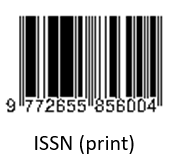Forensic Investigation in SQL Server Database Using Temporal Tables & Extended Events Artifacts
(1) Palestine Technical University- Kadoorei
(*) Corresponding Author
Abstract
Full Text:
PDFReferences
P. A. Carter, Pro SQL Server 2019 Administration, (2019).
D. Korotkevitch, Pro SQL Server Internals, (2016).
L. Davidson, Pro SQL Server Relational Database Design and Implementation, (2021).
B. Ward, SQL Server 2019 on Linux, (2019).
B. Nevarez, Performance SQL Server, (2021).
A. P. Jamdar, M. B. Bhangire, S. G. Shahari, and K. G. Matere, an Efficient Framework for Database Forensic Analysis., Int. J. Adv. Eng. Res. Dev., 4 (5) (2017) 12634–12637
M. Kamaruzzaman, “Top 10 Databases to Use in 2021,” Towards Data Science, https://towardsdatascience.com/top-10-databases-to-use-in-2021-d7e6a85402ba (accessed Jun. 11, 2021), (2021).
Ghanayem, Mark, W. Rohm, and J. Parente, Temporal Tables, Microsoft. https://docs.microsoft.com/en-us/sql/relational-databases/tables/temporal-tables?view=sql-server-ver15 (accessed Jun. 17, 2021). (2016).
P. Jayaram, Temporal Tables in SQL Server, SQL Shake, https://www.sqlshack.com/temporal-tables-in-sql-server/, (2019).
S. Johnson, Introducing SQL Server, (2015).
A. Al-Dhaqm et al., Database forensic investigation process models: A review, IEEE Access, 8 (2020) 48477–48490.
R. Bria, A. Retnowardhani, and D. N. Utama, Five Stages of Database Forensic Analysis: A Systematic Literature Review, Proc. 2018 Int. Conf. Inf. Manag. Technol. ICIMTech 2018, no. September, (2018) 246–250,
B. Narwal, A Walkthrough of Digital Forensics and its Tools, March (2020) 13757–13764, 2020.
J. Wagner, A. Rasin, K. Heart, T. Malik, J. Furst, and J. Grier, Detecting database file tampering through page carving, Adv. Database Technol. - EDBT, 2018-March, (2018) 121–132.
H. Choi, S. Lee, and D. Jeong, “Forensic Recovery of SQL Server Database: Practical Approach,” IEEE Access, 9 (2021) 14564–14575.
R. Jason, A. Wolter, and M. MSFT, Extended events overview, Microsoft, https://docs.microsoft.com/en-us/sql/relational-databases/extended-events/extended-events?view=sql-server-ver15, (2019).
A. Al-Dhaqm, S. Razak, S. H. Othman, A. Ngadi, M. N. Ahmed, and A. A. Mohammed, Development and validation of a database forensic metamodel (DBFM), 12(2) (2017).
V. K. Gupta, J. Bonde, A. Gorad, and P. Joshi, Duel Security-Detection of Database Modification Attack and Restore Facility from Unauthorized Access, 7(6) (2020) 983–987.
DOI: https://doi.org/10.24071/ijasst.v5i1.4611
Refbacks
- —
- —
- —
- Forensic Investigation in SQL Server Database Using Temporal Tables & Extended Events Artifacts
- —
- —
- Forensic Investigation in SQL Server Database Using Temporal Tables & Extended Events Artifacts
- —
- Forensic Investigation in SQL Server Database Using Temporal Tables & Extended Events Artifacts
- —
- —
- Forensic Investigation in SQL Server Database Using Temporal Tables & Extended Events Artifacts
- —
- —
- —
- —
- —
- —
- —
- Forensic Investigation in SQL Server Database Using Temporal Tables & Extended Events Artifacts
- —
- Forensic Investigation in SQL Server Database Using Temporal Tables & Extended Events Artifacts
- Forensic Investigation in SQL Server Database Using Temporal Tables & Extended Events Artifacts
- Forensic Investigation in SQL Server Database Using Temporal Tables & Extended Events Artifacts
- —
- —
Publisher : Faculty of Science and Technology
Society/Institution : Sanata Dharma University

This work is licensed under a Creative Commons Attribution 4.0 International License.











